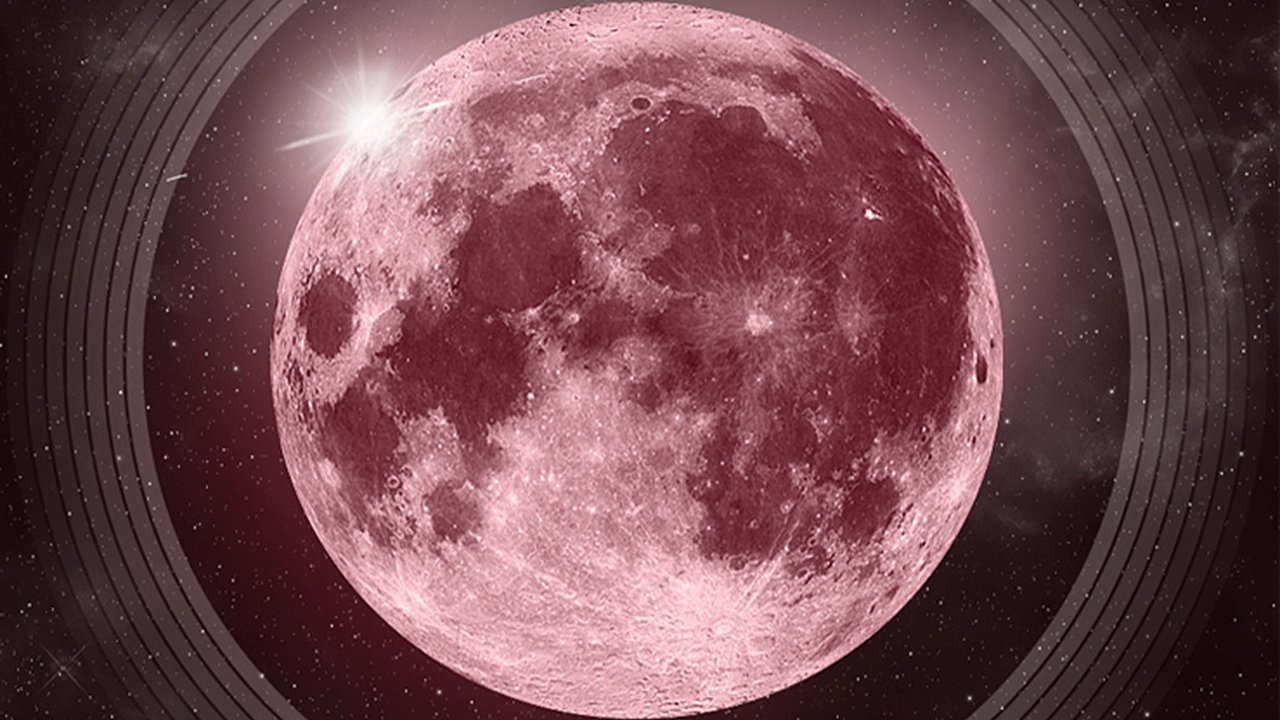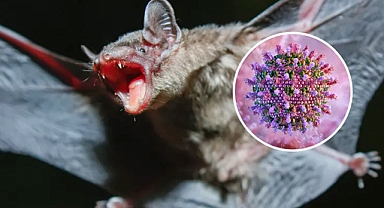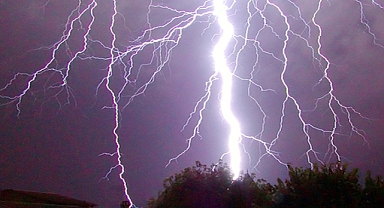April’s Full Pink Micromoon to Light Up the Sky on April 12 — Here’s What to Expect
While it won't actually appear pink, this moon is special for another reason — it’s the smallest full moon of the year, a “micromoon.” This micromoon occurs because the full moon coincides with the point in the moon’s orbit when it is farthest from Earth — a position called apogee. As a result, the moon appears slightly smaller and dimmer than usual. While the size difference might be subtle to the naked eye, it’s a fascinating astronomical event nonetheless. The full moon will reach its peak brightness at 8:22 p.m. EDT (0022 GMT on April 13). Exact moonrise and moonset times depend on your location, so check a local almanac or astronomy app for the best viewing window in your area.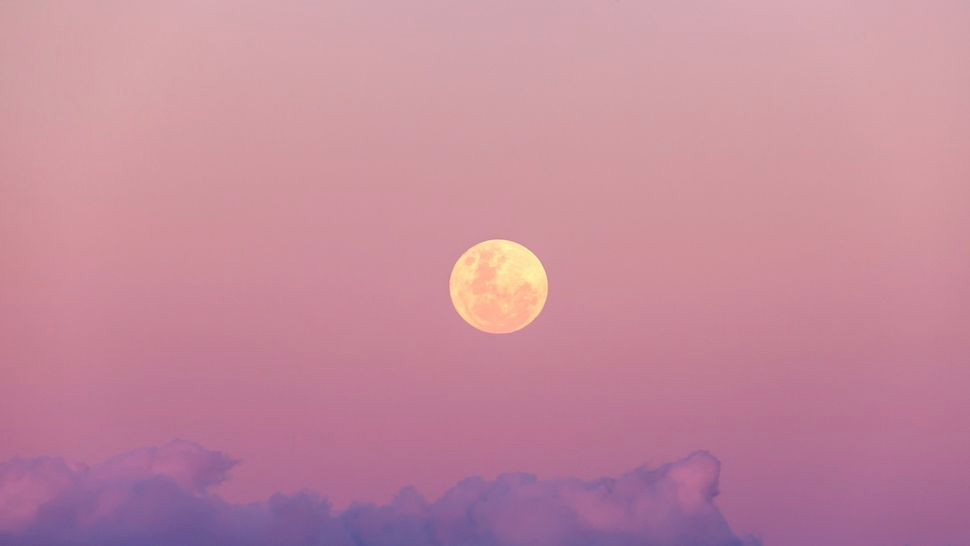 April’s full Pink Moon, the smallest of 2025, rises on April 12. (Image credit: Vicki Smith via Getty Images)For optimal viewing, look toward the eastern horizon around sunset. In New York City, for instance, the moon will rise at 7:30 p.m. EDT, just two minutes before sunset — creating an ideal moment to see the golden moon ascend into a twilight sky. This weekend's full moon will appear in the constellation Virgo, near the luminous star Spica.Even more exciting, viewers in regions such as Central and South America, and parts of southern Africa, will witness a lunar occultation, where the moon temporarily covers Spica. This rare alignment will be fully visible from cities like Buenos Aires, Caracas, and Montevideo, with the exact timing varying by location. This full moon also carries significance in religious traditions. Known as the Paschal Moon, it plays a crucial role in determining the date of Easter in the Christian calendar. Easter falls on the first Sunday following the first full moon after the spring equinox, placing the holiday on April 20 this year.Why Is It Called the “Pink Moon”?
April’s full Pink Moon, the smallest of 2025, rises on April 12. (Image credit: Vicki Smith via Getty Images)For optimal viewing, look toward the eastern horizon around sunset. In New York City, for instance, the moon will rise at 7:30 p.m. EDT, just two minutes before sunset — creating an ideal moment to see the golden moon ascend into a twilight sky. This weekend's full moon will appear in the constellation Virgo, near the luminous star Spica.Even more exciting, viewers in regions such as Central and South America, and parts of southern Africa, will witness a lunar occultation, where the moon temporarily covers Spica. This rare alignment will be fully visible from cities like Buenos Aires, Caracas, and Montevideo, with the exact timing varying by location. This full moon also carries significance in religious traditions. Known as the Paschal Moon, it plays a crucial role in determining the date of Easter in the Christian calendar. Easter falls on the first Sunday following the first full moon after the spring equinox, placing the holiday on April 20 this year.Why Is It Called the “Pink Moon”?
Despite its name, the Pink Moon doesn’t actually glow pink. The nickname comes from the pink-hued moss phlox, one of the earliest blooming wildflowers in North America during spring. The name has roots in Native American culture and was later adopted by the Old Farmer’s Almanac. Other traditional names for April’s full moon include the Sprouting Grass Moon, Egg Moon, and Fish Moon, all of which reference the seasonal shifts of spring.Tips for Photographing the Full Pink Moon
Capturing a great moon photo is easier than you might think. Whether you’re using a smartphone or a DSLR camera, the key is stability and timing. A tripod is essential for clear shots. If you're using a DSLR or mirrorless camera, go for a telephoto lens (200mm or more) to get closer detail.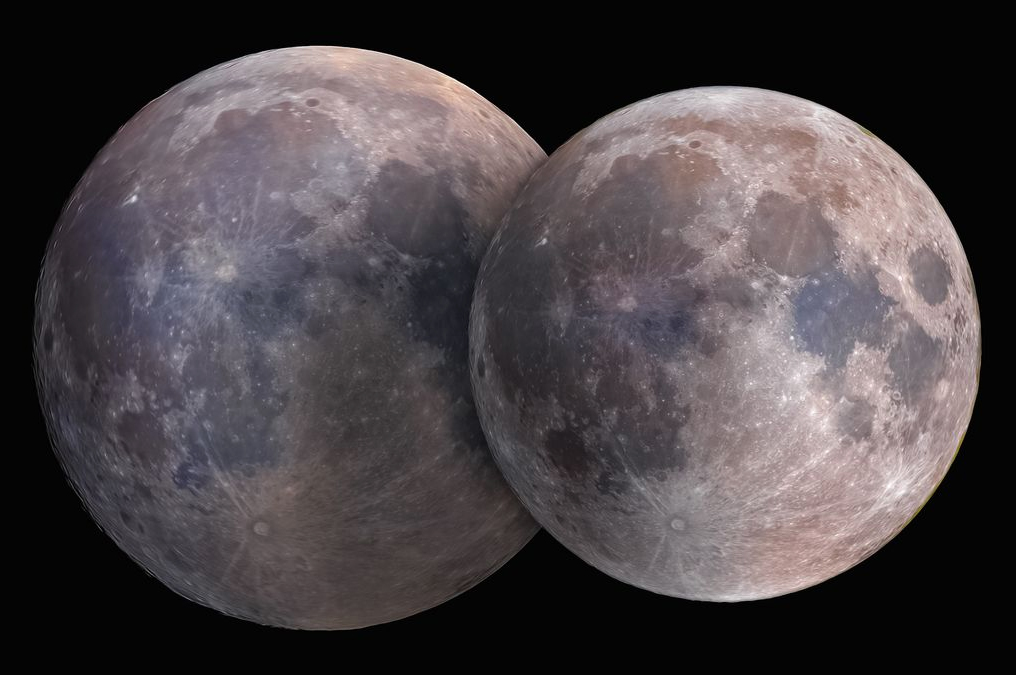 Two images of the moon captured in May and December 2021 by Soumyadeep Mukherjee in Kolkata, India presents a comparison between the apparent size of the supermoon (left) and the micromoon (right). Both images were captured with the same camera and lens at the same focal length for a “true” comparison of their sizes. (Image credit: Soumyadeep Mukherjee)For the best results, try manual settings: ISO between 100 and 400, aperture from f/8 to f/11, and a shutter speed of around 1/125 to 1/250 seconds. Add depth to your photo by including objects like buildings, trees, or mountains in the foreground. If you’re using a smartphone, experiment with night mode or a manual camera app that allows you to tweak settings. The most photogenic time is right after moonrise, when the moon is low and the sky is still tinged with twilight colors. Want to level up your moon photography? Check out our full guide to photographing the moon, plus our expert picks for the best astrophotography cameras and lenses to help you get started.April’s Micromoon at a Glance:
Two images of the moon captured in May and December 2021 by Soumyadeep Mukherjee in Kolkata, India presents a comparison between the apparent size of the supermoon (left) and the micromoon (right). Both images were captured with the same camera and lens at the same focal length for a “true” comparison of their sizes. (Image credit: Soumyadeep Mukherjee)For the best results, try manual settings: ISO between 100 and 400, aperture from f/8 to f/11, and a shutter speed of around 1/125 to 1/250 seconds. Add depth to your photo by including objects like buildings, trees, or mountains in the foreground. If you’re using a smartphone, experiment with night mode or a manual camera app that allows you to tweak settings. The most photogenic time is right after moonrise, when the moon is low and the sky is still tinged with twilight colors. Want to level up your moon photography? Check out our full guide to photographing the moon, plus our expert picks for the best astrophotography cameras and lenses to help you get started.April’s Micromoon at a Glance:
While it won't actually appear pink, this moon is special for another reason — it’s the smallest full moon of the year, a “micromoon.” This micromoon occurs because the full moon coincides with the point in the moon’s orbit when it is farthest from Earth — a position called apogee. As a result, the moon appears slightly smaller and dimmer than usual. While the size difference might be subtle to the naked eye, it’s a fascinating astronomical event nonetheless. The full moon will reach its peak brightness at 8:22 p.m. EDT (0022 GMT on April 13). Exact moonrise and moonset times depend on your location, so check a local almanac or astronomy app for the best viewing window in your area.
 April’s full Pink Moon, the smallest of 2025, rises on April 12. (Image credit: Vicki Smith via Getty Images)For optimal viewing, look toward the eastern horizon around sunset. In New York City, for instance, the moon will rise at 7:30 p.m. EDT, just two minutes before sunset — creating an ideal moment to see the golden moon ascend into a twilight sky. This weekend's full moon will appear in the constellation Virgo, near the luminous star Spica.Even more exciting, viewers in regions such as Central and South America, and parts of southern Africa, will witness a lunar occultation, where the moon temporarily covers Spica. This rare alignment will be fully visible from cities like Buenos Aires, Caracas, and Montevideo, with the exact timing varying by location. This full moon also carries significance in religious traditions. Known as the Paschal Moon, it plays a crucial role in determining the date of Easter in the Christian calendar. Easter falls on the first Sunday following the first full moon after the spring equinox, placing the holiday on April 20 this year.Why Is It Called the “Pink Moon”?
April’s full Pink Moon, the smallest of 2025, rises on April 12. (Image credit: Vicki Smith via Getty Images)For optimal viewing, look toward the eastern horizon around sunset. In New York City, for instance, the moon will rise at 7:30 p.m. EDT, just two minutes before sunset — creating an ideal moment to see the golden moon ascend into a twilight sky. This weekend's full moon will appear in the constellation Virgo, near the luminous star Spica.Even more exciting, viewers in regions such as Central and South America, and parts of southern Africa, will witness a lunar occultation, where the moon temporarily covers Spica. This rare alignment will be fully visible from cities like Buenos Aires, Caracas, and Montevideo, with the exact timing varying by location. This full moon also carries significance in religious traditions. Known as the Paschal Moon, it plays a crucial role in determining the date of Easter in the Christian calendar. Easter falls on the first Sunday following the first full moon after the spring equinox, placing the holiday on April 20 this year.Why Is It Called the “Pink Moon”?Despite its name, the Pink Moon doesn’t actually glow pink. The nickname comes from the pink-hued moss phlox, one of the earliest blooming wildflowers in North America during spring. The name has roots in Native American culture and was later adopted by the Old Farmer’s Almanac. Other traditional names for April’s full moon include the Sprouting Grass Moon, Egg Moon, and Fish Moon, all of which reference the seasonal shifts of spring.Tips for Photographing the Full Pink Moon
Capturing a great moon photo is easier than you might think. Whether you’re using a smartphone or a DSLR camera, the key is stability and timing. A tripod is essential for clear shots. If you're using a DSLR or mirrorless camera, go for a telephoto lens (200mm or more) to get closer detail.
 Two images of the moon captured in May and December 2021 by Soumyadeep Mukherjee in Kolkata, India presents a comparison between the apparent size of the supermoon (left) and the micromoon (right). Both images were captured with the same camera and lens at the same focal length for a “true” comparison of their sizes. (Image credit: Soumyadeep Mukherjee)For the best results, try manual settings: ISO between 100 and 400, aperture from f/8 to f/11, and a shutter speed of around 1/125 to 1/250 seconds. Add depth to your photo by including objects like buildings, trees, or mountains in the foreground. If you’re using a smartphone, experiment with night mode or a manual camera app that allows you to tweak settings. The most photogenic time is right after moonrise, when the moon is low and the sky is still tinged with twilight colors. Want to level up your moon photography? Check out our full guide to photographing the moon, plus our expert picks for the best astrophotography cameras and lenses to help you get started.April’s Micromoon at a Glance:
Two images of the moon captured in May and December 2021 by Soumyadeep Mukherjee in Kolkata, India presents a comparison between the apparent size of the supermoon (left) and the micromoon (right). Both images were captured with the same camera and lens at the same focal length for a “true” comparison of their sizes. (Image credit: Soumyadeep Mukherjee)For the best results, try manual settings: ISO between 100 and 400, aperture from f/8 to f/11, and a shutter speed of around 1/125 to 1/250 seconds. Add depth to your photo by including objects like buildings, trees, or mountains in the foreground. If you’re using a smartphone, experiment with night mode or a manual camera app that allows you to tweak settings. The most photogenic time is right after moonrise, when the moon is low and the sky is still tinged with twilight colors. Want to level up your moon photography? Check out our full guide to photographing the moon, plus our expert picks for the best astrophotography cameras and lenses to help you get started.April’s Micromoon at a Glance:- Event: Full Pink Moon (Micromoon)
- Date: Saturday, April 12, 2025
- Peak Illumination: 8:22 p.m. EDT / 0022 GMT (April 13)
- Significance: Smallest full moon of the year, due to apogee
- Religious Link: Sets the date for Easter (April 20)
- Visibility Bonus: Lunar occultation of Spica in select regions
- Photography Tip: Best shots come at moonrise with twilight backdrops
